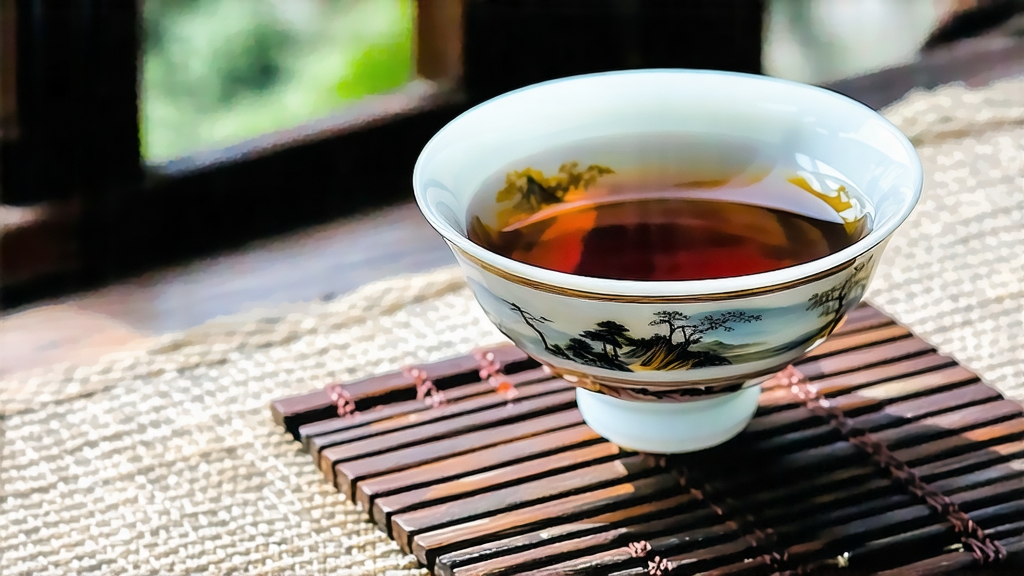
Tucked high on the northern rim of the Sichuan Basin, where humid clouds roll over 1,500-year-old stone terraces, Mengding Huangya has quietly embodied the soul of Chinese yellow tea for more than twelve centuries. Unlike its green cousin that chases freshness, or the post-fermented dark teas that glory in age, this “imperial yellow bud” pursues a fleeting moment of micro-oxidation known menpiao—literally “sealed yellowing”—a craft so subtle that a five-minute lapse can swing a batch from floral elegance to flat hay. To international drinkers who have only met green tea’s grassy bite or black tea’s malt, Mengding Huangya offers a gentle revelation: a liquor the color of morning sunlight on bamboo, an aroma that oscillates between fresh corn silk and mountain orchid, and a finish that lingers like cool melon rind.
Historical whispers place the first plucking at Mengding Mountain in the Tang dynasty (618-907 CE), when Buddhist monks offered the down-covered buds to the throne as “immortal tea.” By the Song period the tea-tax archives record 180 kilograms of mengding tribute, couriered by fast horses down narrow plank roads to Chang’an. Imperial favor continued through the Ming and Qing; the Qing Daoguang Emperor allegedly refused any other tea during spring court sessions, claiming Huangya “cleared palace smoke from the palate.” When China’s last dynasty collapsed in 1911, the delicate yellowing technique almost vanished—farmers switched to faster-paying green tea until a 1959 state-led restoration project recovered the ancient protocol. Today less than 30 tons leave the mountain each year, making authentic Mengding Huangya rarer per ounce than silver.
Botanically the tea belongs to the local Sichuan cultivar “chuannong huangya,” a small-leaf bush that develops extraordinarily high levels of soluble sugars and glutamic acid under cool cloud cover. Growers restrict plucking to the single unopened bud and the half-inch stem beneath it—about 60,000 tips yield one kilogram of finished tea. The harvest window opens for only ten days around the Qingming festival (early April) when night temperatures still dip to 8°C, slowing enzymatic activity and concentrating amino acids. Pickers work before 9 a.m., laying the buds in shallow bamboo baskets lined with banana leaf to prevent compression bruises.
The craft that follows is best visualized as a three-act play performed in a single day.
Act I: “Killing Green” (shaqing)
Within two hours of plucking the buds are tumble-roasted in bamboo drums heated to 140°C for exactly 90 seconds. The goal is not full de-enzyming, as in green tea, but a partial denaturation that leaves roughly 15% polyphenol oxidase alive for the crucial yellowing later. Masters listen for the change in drum resonance: when the rustle turns from wet hiss to dry whisper they yank the batch, cool it on rush mats, and gently knead the buds for five minutes to bruise the epidermis just enough.
Act II: “Sealed Yellowing” (menhuang)
The still-warm buds are wrapped in thin cotton cloth, then stacked in cedar boxes lined with wet rice paper. Temperature is held at 32°C with 75% humidity for four to six hours. During this sauna the surviving enzymes oxidize chlorophyll into pheophytin, turning the leaf a muted olive-yellow while converting catechins into theaflavins and aromatic lactones. Every forty minutes the cloth is unrolled for a quick “breath,” re-wrapped, and turned 180° so heat disperses evenly. A faint apricot note rises—when it edges toward jackfruit the master knows the yellowing is complete.
Act III: “Slow Baking” (zuohong)
Finally the buds are given three low-temperature bakes: 60°C for 30 min, rest 1 hr; 55°C for 45 min, rest 2 hr; 50°C overnight. Each rest allows residual moisture to migrate from stem to leaf, equalizing water activity to 4% without scorching the down. The finished tea resembles tiny golden fishhooks, each tip sporting a microscopic down that glints under light.
To unlock Mengding Huangya’s signature “honey-dew lock” you need restraint: too much heat or leaf and the liquor collapses into green-tea